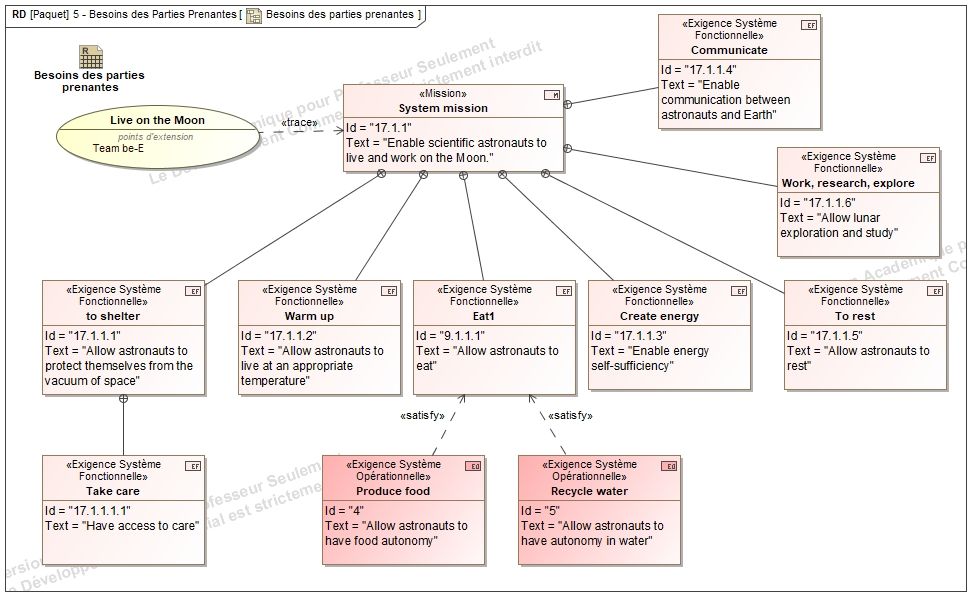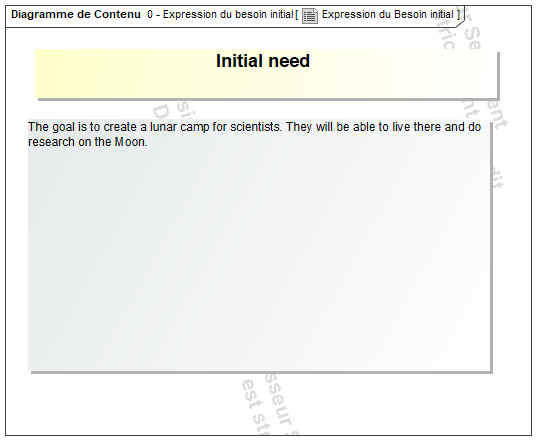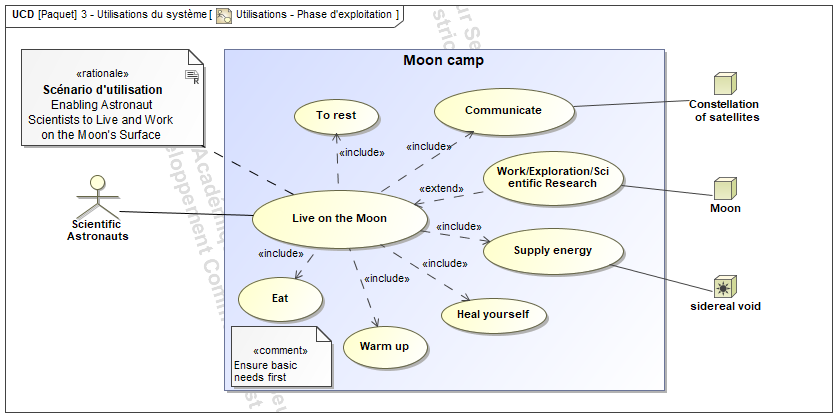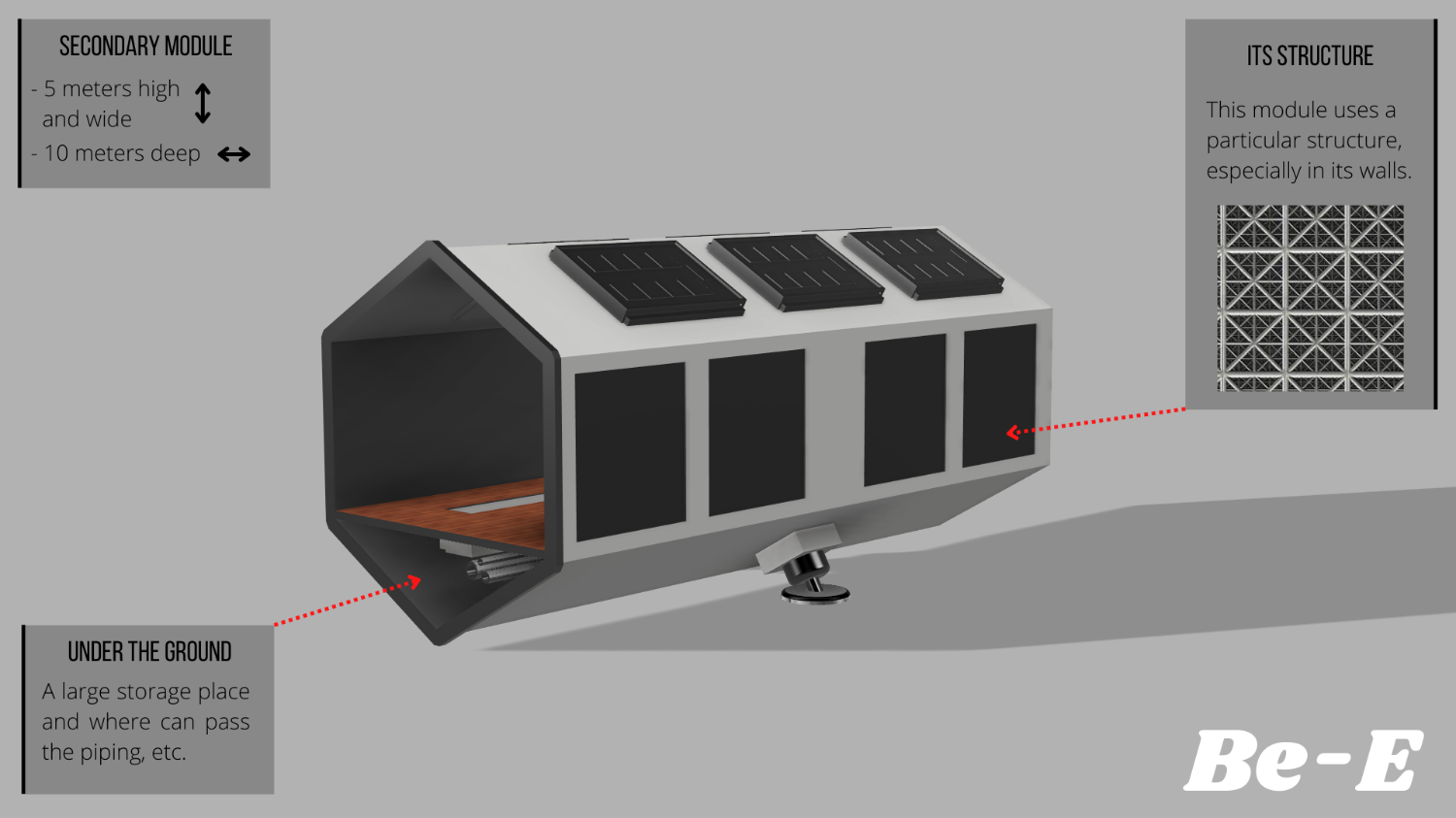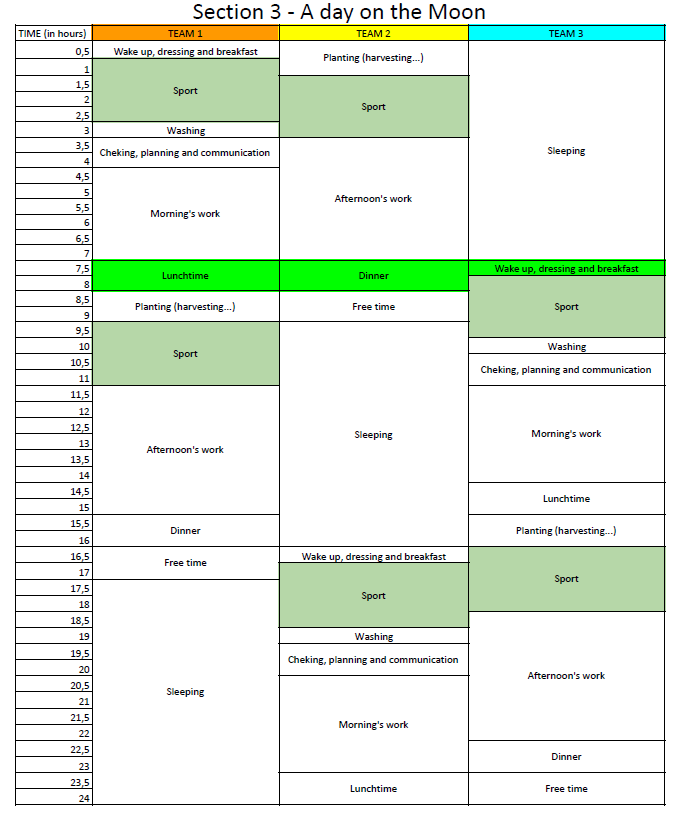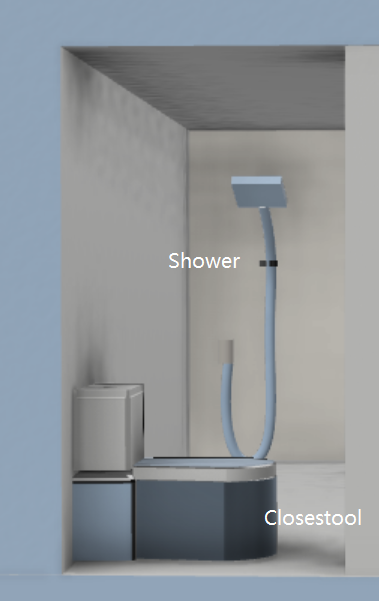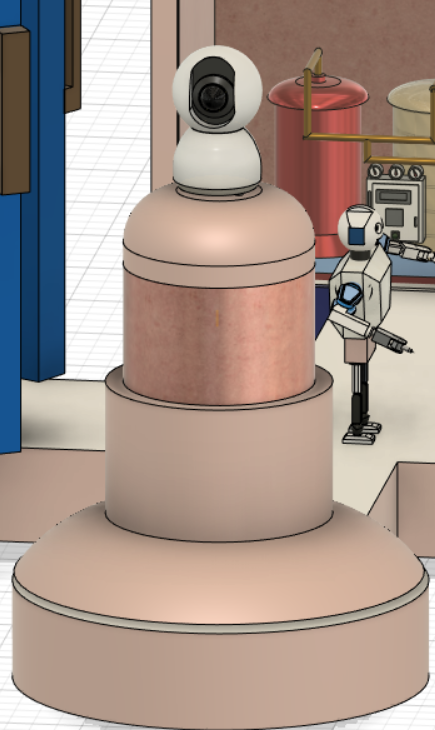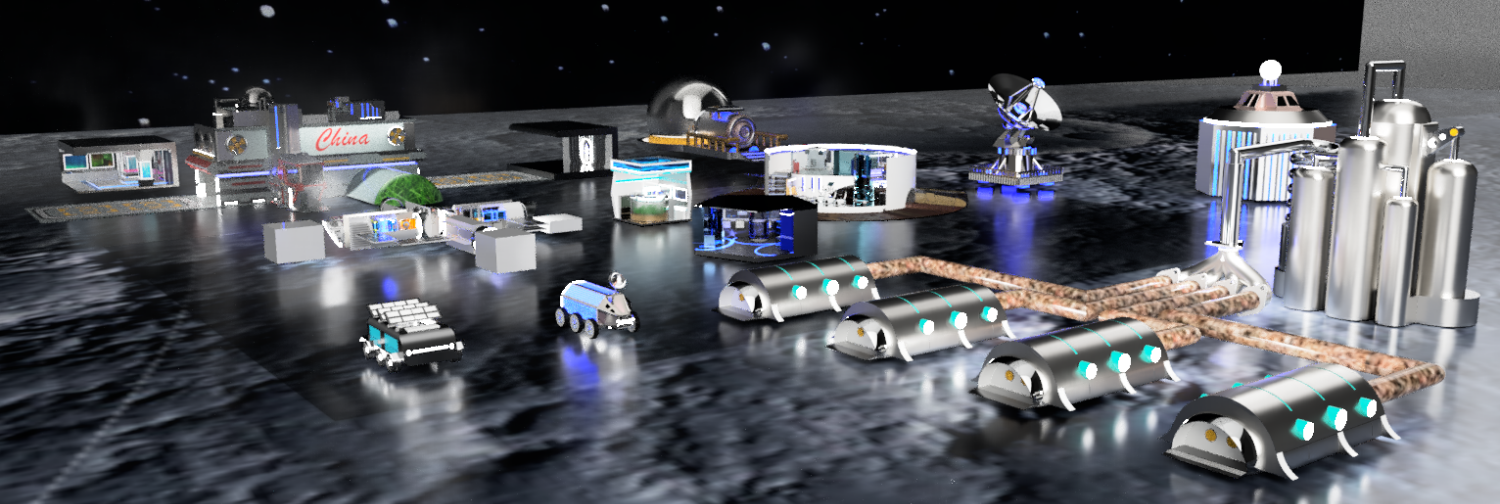Moon Camp Pioneers Gallery 2021-2022
In Moon Camp Pioneers each team’s mission is to 3D design a complete Moon Camp using Fusion 360. They also have to explain how they will use local resources, protect astronauts from the dangerous of space and describe the living and working facilities.
Team: Be-E
Lycée polyvalent Blaise Pascal Colmar France 16, 17 5 / 0
External viewer for 3d project
|
Project description
Our goal is to design a lunar base capable of being built in the near future that is self-sufficient and can accommodate 6 astronauts at the same time without space concerns. Our project is based on the “easy” side of the deployment of the base. We base our project on the shape of a dome with several independent modules, each of which has a specific role to play in the base, and which are necessary for the well-being of the astronauts. These modules will contain everything from sports, to studying the stars, to agriculture, to food storage and medical care. Our inspiration comes from biomimicry on the alveolar structures of bees. Food will need to be brought from Earth initially, and then produced by the base in the modules. |
|||
|
2.1 Where do you want to build your Moon Camp?
In order to find the best place to set up our lunar base, we looked for a place that would best respond to the problems we face, namely supplying our base with water and energy. This is why we chose to build our base at the south pole of the moon. Indeed, the South Pole offers these two essential resources: water and energy. In the permanent shadow of some craters, there are large patches of ice, and the surrounding peaks are almost permanently exposed to light, making them suitable locations for solar panels. Specifically, we chose to set up on the rim of the Shackleton Crater, where all the advantages mentioned above can be found. In addition, the crater offers total darkness and low temperature, which will allow unique and undisturbed astronomical observations. 2.2 How do you plan to build your Moon Camp? Describe the techniques, materials and your design choices.
In a first time, our base will repose on our principal module, who arrive first on the Moon. This principal module is easier to transport and does not require an adapted rocket. The latter will land top precise and justified coordinates and will be easily deployed. Considering the lunar gravity and the materials used, the principal module can be move easier in case of margin of error. In a second time, a crew of two astronauts get ready to join the principal module. The crew will have to check and secure the correct functioning thus the possibility for the other modules to moor to the principal module. Finally, secondary modules will dock to the principal. With their appearance, secondary modules are also easier to transport to the Moon. The assembly of the modules is very fast and easy. This is the faculty of our base, complex but easy to use. Our Moon camp use not specific materials. In fact, the materials used must resist at asteroid fall, solar radiations, and the extreme temperature of the Moon. The different layers of materials are easy to assemble due to the design of the modules and its walls are composed of a triangular frame to allow a better maintenance of the module and avoid deformations (and support Peltier modules). 2.3 The environment on the Moon is very dangerous for the astronauts. Explain how your Moon Camp will protect them. (maximum 150 words)
First, we specified earlier that our Moon Camp will be built in a crater in the South of the Moon. The sunlight touches the craters very rarely so to protect our astronauts from the blistering cold, our Moon Camp will be kept warm by a heating system coming from the floor. Moon’s dusts are very bothering, to prevent our astronauts from getting uncomfortable with it, we will use a filtering system in our Camp. To keep astronauts safe from the intense gamma radiation, our astronauts will wear a special suit to protect themselves. Against micrometeorites, we planned to use the 3D printing. This method will print a shield around our Moon Camp to protect the astronauts from the natural disasters of the Moon. |
|||
|
2.4 Explain how your Moon Camp will provide the astronauts with:
|
Water
|
Food
|
Power
|
Air
|
|
At the start the astronauts will bring some water with them and use this water for the time of the base construction. when the construction site is finished, we will use the ice near to the base to provide some water to the astronauts. Of course, all wastewaters must be recycled as much as possible (with filter, clarifier tanks, ozone treatment…). The water will be required for several things like plantations, hygiene. |
For the food, the main goal is to be self-sufficient as soon as possible. Of course, at the begging the astronaut will have to eat packed food from earth. The food of the astronauts will be only composed of vegetables. Food such as kale and potatoes could be grown hydroponically in a sheltered greenhouse lit by LEDs. Plant recycle waste and turn carbon dioxide into oxygen, so would form an essential part of a life-support system. |
Our first power source will be the Peltier module that can turn temperature difference into electricity. Later on the astronaut may add solar panels, due to the almost constant illumination of the site. In case of technical issue with the panels or the Peltier module, a battery will be installed to ensure a good functioning of the base for some time. |
At the begging we will use compressed air brought from earth to secure the oxygen access for the astronaut. Later we will use the new ACLS system that can recycle CO2 into O2. |
|
2.5 Explain what would be the main purpose of your Moon Camp.
Our base is designed to match with scientific experiments but, in the future, it can also match to commercial and/or tourism. In fact, we also thought about another layout of the secondary modules. Our secondary modules whose shape is hexagonal, can be stacked to fit an appartement, where each module would correspond to a room. But in a first time, it will be very focused on scientific experiments. |
|||
|
3.1 Describe a day on the Moon for your Moon Camp astronaut crew.
We started to divide the 6 people in the moon base into 3 teams of 2, in order to be able to distribute the different tasks to be done over the 24 hours of a day. Indeed, we have set up a rota so that the moon base would be active 24 hours a day, since there are always at least two teams awake. Thus, the schedules between the teams are staggered so that two teams do not end up doing the same task together. With the exception of sport, where two teams cross paths, so that the crew can also have a moment of exchange with the other teams. With the same objective, we made sure that the whole crew, the 6 people, met during a meal, to allow a moment of exchange and that the teams were not completely disconnected from each other. Therefore, by trying to respect all these constraints that we have put in place, we have been able to create a typical planning of our moon base, describing a day of each team according to the hours of the day. We have attached this planning ” Section 3 – A day on the Moon.png”. |
|||


